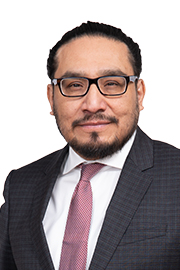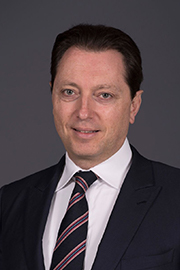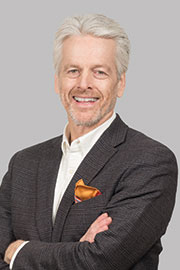- Nov/3/22 9:20:00 a.m.
- Re: Bill 26
Meegwetch, everyone. It’s always an honour to be able to stand up and speak for the people of Kiiwetinoong. It’s a riding that’s very rich: rich in our ways of life; rich in our identities, our languages; but also rich in community and rich in resources.
This morning, I want to be able to focus my talk on schedule 3, which amends the Ryerson University Act. The schedule of Bill 26 changes the name from Ryerson University to Toronto Metropolitan University.
While we have this official piece of legislation to change the name of this university, it’s important for everyone to know, to talk about and honour the work that happened to make this name change happen, and why the Indigenous community at TMU spent years working to change the university’s name.
TMU, formerly Ryerson, was named after Egerton Ryerson. He played a key role in the design of Indian residential schools in Canada, a system that contributed to the genocide of First Nations people. TMU acknowledged that for years they did not understand the concern of the community people, of the Indigenous people who worked and went to school there, at TMU, about the name. There was also little desire to accept responsibility to address these concerns, and there was also a reluctance to acknowledge the harmful role played by the University’s namesake, Egerton Ryerson.
I want to share some words from the final report of the Truth and Reconciliation Commission describing Indian residential schools. I want to quote this: “Canada’s” Indian “residential school system for” Indigenous “children was an education system in name only for much of its existence. These residential schools were created for the purpose of separating” Indigenous “children from their families, in order to minimize and weaken family ties and cultural linkages, and to indoctrinate children into a new culture—the culture of the legally dominant Euro-Christian Canadian society, led by Canada’s first Prime Minister, Sir John A. Macdonald. The schools were in existence for well over 100 years, and many successive generations of children from the same communities and families endured the experience of them. That experience was hidden for most of Canada’s history, until survivors of the system were finally able to find the strength, courage, and support to bring their experiences to light in” multiple “court cases that ultimately led to the largest class-action lawsuit in Canada’s history....”
The Truth and Reconciliation Commission “heard from more than 6,000 witnesses, most of whom survived the experience of living in the schools as students. The stories of that experience are sometimes difficult to accept as something that could have happened in a country such as Canada, which has long prided itself on being a bastion of democracy, peace, and kindness throughout the world. Children were abused, physically and sexually, and they died in the schools in numbers that would not have been tolerated in any school system anywhere in the country, or in the world....
“For over a century, the central goals of Canada’s” Indigenous “policy were to eliminate” Indigenous “governments; ignore” Indigenous “rights; terminate the treaties; and, through a process of assimilation, cause” Indigenous “peoples to cease to exist as distinct legal, social, cultural, religious, and racial entities in Canada. The establishment and operation of” Indian “residential schools were a central element of this policy, which can best be described as ‘cultural genocide.’
“Physical genocide is the mass killing of the members of a targeted group, and biological genocide is the destruction of the group’s reproductive capacity. Cultural genocide is the destruction of those structures and practices that allow the group to continue as a group. States that engage in cultural genocide set out to destroy the political and social institutions of the targeted group. Land is seized, and populations are forcibly transferred and their movement is restricted. Languages are banned. Spiritual leaders are persecuted, spiritual practices are forbidden, and objects of spiritual value are confiscated and destroyed. And most significantly to the issue at hand, families are disrupted to prevent the transmission of cultural values and identity from one generation to the next.
“In its dealings with” Indigenous “people, Canada did all these things.”
That’s a quote from the report. I share that because, Speaker, it was because of the role that Egerton Ryerson played in this cultural disruption and genocide that the name of Ryerson University had to be changed.
In 2017, the Ryerson University Indigenous Students’ Association called on the school to remove the statue of Egerton Ryerson and to change its name. The student-led campaign from 2020 pushed for the school to change its name out of respect for Indian residential school survivors. They asked the university to “change the name of Ryerson University to a name that does not celebrate a man who supported and created the structures of colonial genocide.”
While Ryerson did not develop the Indian residential school policy, he did recommend the 1842-44 Bagot Commission to the Department of Indian Affairs. That commission recommended “manual labour schools where Indigenous children were separated from their parents to achieve the assimilation” of Indigenous peoples—a legacy that has had a negative effect on Indigenous people in Canada for all the years since.
Ryerson’s role in the development of residential schools was also identified in 2015 in the Final Report of the Truth and Reconciliation Commission of Canada, volume 1, part 1.
In 2010, Ryerson University acknowledged the legacy of a painful past, and the Aboriginal Education Council there identified Ryerson’s “role in shaping the concept of the residential school system and the system’s devastating impact on Indigenous people.”
Another step to acknowledge this past was taken in 2018. There was a plaque that was installed on the statue of Ryerson on campus. The plaque was meant to contextualize the role Ryerson played in upholding the residential school system. The plaque read, “This plaque serves as a reminder of Ryerson University’s commitment to moving forward in the spirit of truth and reconciliation.
“Egerton Ryerson is widely known for his contributions to Ontario’s public educational system. As chief superintendent of education, Ryerson’s recommendations were instrumental in the design and implementation of the Indian residential school system.
“In 2015, the Truth and Reconciliation Commission reported that children in the schools were subjected to unthinkable abuse and neglect, to medical experimentation, punishment for the practice of cultures or languages and death. The aim of the residential school system was cultural genocide.”
That plaque concluded with two quotes, one by Chief Sitting Bull: “Let us put our minds together to see what kind of lives we can create for our children.”
The other quote that they had on there was from the Truth and Reconciliation Commission of Canada: “For the child taken, for the parent left behind.”
After this, in 2020, the president of Ryerson University established the Indigenous-led Standing Strong Task Force, which made a number of recommendations to change the university for the better. Their primary recommendation at that time was to change the name of the university in the spirit of reconciliation. But the discovery of the 215 changed the timeline suggested by the task force. At this time, there was an outpouring of grief nationwide after the discovery of the 215 in Tk’emlúps.
On May 27, 2021, the Tk’emlúps te Secwépemc Nation confirmed the unthinkable loss that was spoken about but never documented by the Kamloops Indian Residential School. With the help of a ground-penetrating radar specialist, the truth of the preliminary findings came to light: the confirmation of the remains of the 215 children who were students at the Kamloops Indian Residential School.
I remember at that same moment, in June 2021, the statue of Ryerson at Ryerson University was pulled down by demonstrators. I actually was there. I happened to be in town, and I saw it come down. Part of it, I watched, and then the next day, I went to visit the residential school here in Brantford.
- Hear!
- Rabble!
- Nov/3/22 9:40:00 a.m.
- Re: Bill 26
Good morning to everyone in the House. The member opposite spoke to one component of the bill; there are certainly multiple components. I know recently the member from Kitchener Centre, who is the critic for colleges and universities, discussed sexual violence in this Legislature previously and certainly brought up situations at post-secondary colleges, universities etc.
So my question to the member opposite is: We’ve heard from you that you seem to be supportive of the name change for Ryerson, so based on that and other components related to sexual violence on campus, can we assume, then, that you will be supporting this government legislation?
- Hear!
- Rabble!
- Nov/3/22 9:40:00 a.m.
- Re: Bill 26
Thank you to the member from Kiiwetinoong for your comments today. We are all so fortunate to have you in this House, to have your voice and your experience as a residential school survivor in this House. Every time that I hear you speak, everybody in the House is paying attention, and especially in these quieter periods in the House, that’s not always happening.
You mentioned at the end of your speech that renaming Ryerson to Toronto Metropolitan University is one step and that there’s room for improvement in this bill. What else should this Legislature be doing in order to get to true truth and reconciliation about the residential school system?
- Hear!
- Rabble!
- Nov/3/22 9:50:00 a.m.
- Re: Bill 26
The member talked about Egerton Ryerson within the context of the piece of legislation, around the renaming and the importance of that. And he said that there was some resistance, I think, to contextualize Ryerson’s role in establishing the design and the implementation around residential schools. And so my question to the member is, how important is it to recognize the truth of our history, and in a moving-forward way, how important is it that that history be taught in a safe and accurate way?
- Hear!
- Rabble!





